The Economics and Statistics Division maintains archives of previous publications for accountability purposes, but makes no updates to keep these documents current with the latest data revisions from Statistics Canada. As a result, information in older documents may not be accurate. Please exercise caution when referring to older documents. For the latest information and historical data, please contact the individual listed to the right.
<--- Return to Archive
For additional information relating to this article, please contact:
December 11, 2023FIRST-TIME HOME BUYERS INCOME AND PRICE-INCOME RATIO, 2020 Statistics Canada recently released new data from the Canadian Housing Statistics Program (CHSP) for the 2020 reference year. The release includes updated information on first-time home buyers for Nova Scotia, New Brunswick, Manitoba, British Columbia and Yukon. Data are restricted to resident owners who are persons that filed their T1 tax return for the tax year 2020 and purchased a property in a market sale from January to December 2020.
First-time homebuyer refers to a person who purchased a residential property during the reference period and did not own a residential property previously. Repeat buyers is a residual category comprised of persons who purchased a residential property during the reference period and were not first-time homebuyers. Family income is the sum of the total incomes of all family members. The price-to-income ratio refers to the ratio between the sale price of the property sold and the sum of the total individual incomes of the property buyers.
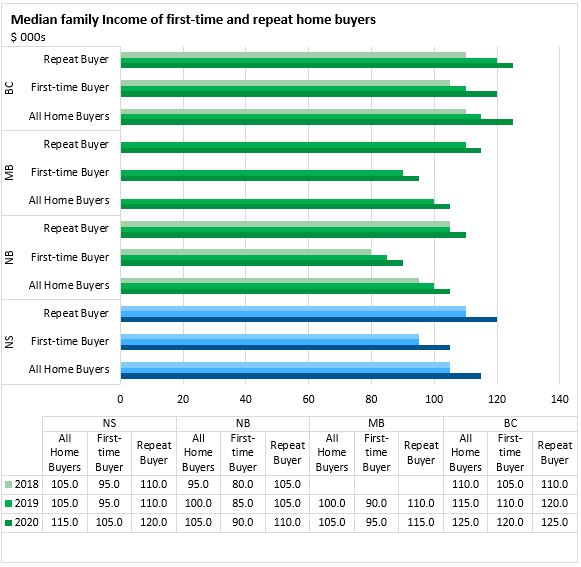
In 2020, the median family income of first-time home buyers increased 10.5% to $105,000 in Nova Scotia, outpacing the 9.1% increase in median family income for repeat buyers. Across reporting provinces, median first-time buyer income was highest in British Columbia and lowest in New Brunswick. Nova Scotia had the fastest increase in median income of first-time buyers in 2020, while Manitoba and New Brunswick had the slowest increases.
From 2018 to 2020, median family income of first-time buyers was less than repeat buyer income for all reporting provinces. For Nova Scotia, median repeat buyer income was $15,000 more than first-time buyer income in 2020.
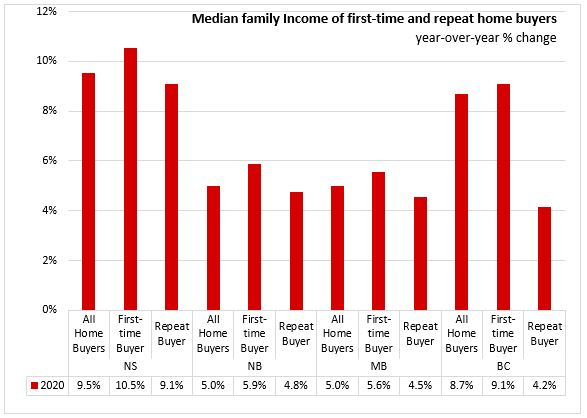
From 2018 to 2020, median family incomes of first-time buyers were similar for those under 35 years of age and those between 34 to 54 years of age, while buyers 55 and over had lower median family income. First-time buyers under 35, and between 35 and 54, had a median family income of $105,000 in Nova Scotia in 2020, up from $95,000 in 2019. Nova Scotia's first-time buyers age 55 and over had a median family income of $80,000, up from $75,000 in 2019.
British Columbia had the highest median family income across reporting provinces for all age cohorts, with median income at $120,000 for those under 35 and between 35 and 54, and $95,000 for those 55 and older.
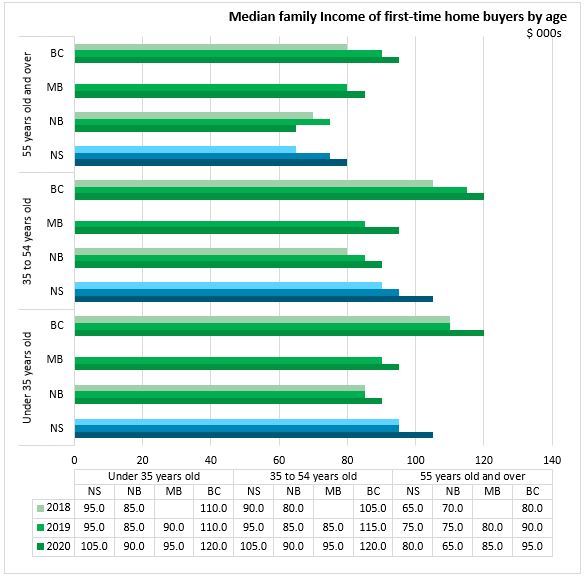
In 2020, the median price-to-income ratio (residential property sales price over incomes of buyers) was 2.0, with a median ratio of 2.4 for first-time buyers and 1.8 for repeat buyers. New Brunswick reported the lowest median price-to-income ratio for first-time and repeat buyers. British Columbia had notably higher median price-to-income ratios than other reporting provinces, with ratios of 4.4 for first-time buyers and 5.1 for repeat buyers in 2020. All reporting provinces except British Columbia had higher median price-to-income ratios for first-time buyers compared to repeat buyers.
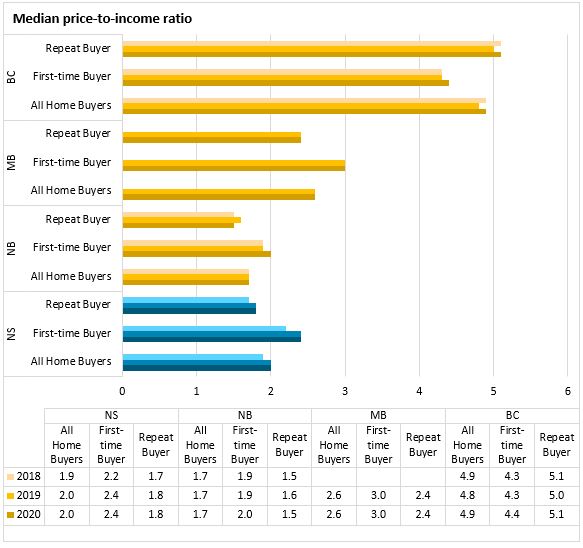
Among Nova Scotia first-time buyers under 35 years of age, the median price-to-income ratio was 2.4 in 2020, below 2.6 reported for those 35 to 54 years old, and higher than 2.1 reported for those 55 years and over. New Brunswick had the lowest median price-to-income ratios across all three age cohorts in 2020, while British Columbia had the highest ratios.
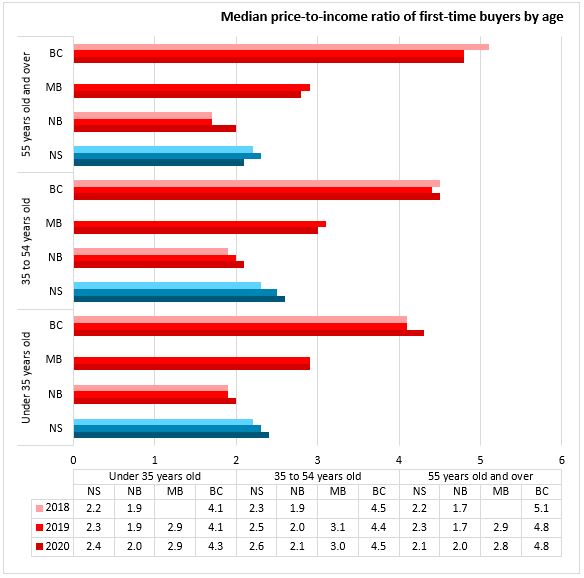
Source: Statistics Canada, Canadian Housing Statistics Program: First-time homebuyers, 2020
<--- Return to Archive